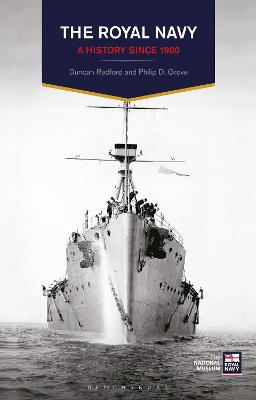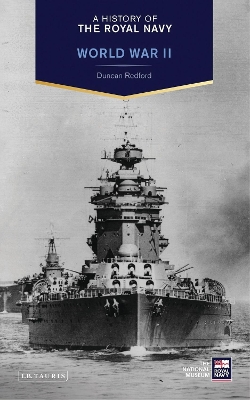A History of the Royal Navy
3 total works
Since 1900, the Royal Navy has seen vast changes to the way it operates. This book tells the story, not just of defeats and victories, but also of how the navy has adjusted to over 100 years of rapid technological and social change. The navy has changed almost beyond recognition since the far-reaching reforms made by Admiral Fisher at the turn of the century. Fisher radically overhauled the fleet, replacing the nineteenth-century wooden crafts with the latest in modern naval technology, including battleships (such as the iconic dreadnoughts), aircraft carriers and submarines. In World War I and World War II, the navy played a central role, especially as unrestricted submarine warfare and supply blockades became an integral part of twentieth-century combat. However it was the development of nuclear and missile technology during the Cold War era which drastically changed the face of naval warfare - today the navy can launch sea-based strikes across thousands of miles to reach targets deep inland. This book navigates the cross currents of over 100 years of British naval history.
As well as operational issues, the authors also consider the symbolism attached to the navy in popular culture and the way naval personnel have been treated, looking at the changes in on-board life and service during the period, as well as the role of women in the navy. In addition to providing full coverage of the Royal Navy's wartime operations, the authors also consider the functions of the navy in periods of nominal peace - including disaster relief, diplomacy and exercises. Even in peacetime the Royal Navy had a substantial role to play. Covering the whole span of naval history from 1900 to the present, this book places the wars and battles fought by the navy within a wider context, looking at domestic politics, economic issues and international affairs. It will be essential reading for anyone interested in naval history and operations, as well as military history more generally.
As well as operational issues, the authors also consider the symbolism attached to the navy in popular culture and the way naval personnel have been treated, looking at the changes in on-board life and service during the period, as well as the role of women in the navy. In addition to providing full coverage of the Royal Navy's wartime operations, the authors also consider the functions of the navy in periods of nominal peace - including disaster relief, diplomacy and exercises. Even in peacetime the Royal Navy had a substantial role to play. Covering the whole span of naval history from 1900 to the present, this book places the wars and battles fought by the navy within a wider context, looking at domestic politics, economic issues and international affairs. It will be essential reading for anyone interested in naval history and operations, as well as military history more generally.
The Royal Navy's operations in World War II started on 3 September 1939 and continued until the surrender of Japan in August 1945 - there was no 'phoney war' at sea. The navy played a central role in the evacuation of the retreating British army at Dunkirk, and later orchestrated the sinking of Germany's mighty battleship and Hitler's pride, the Bismarck. Without the Royal Navy's attention to the defence of Britain's seaborne trade - especially in the struggle against German U-boats in the Battle of the Atlantic - there would not have been food for the country, fuel for the RAF's operations or supplies to keep the army fighting in Europe, North Africa and the Far East. Yet the outstanding naval contribution to Britain's survival and eventual victory came at a heavy cost in terms of ships and to the men who had to face not just the violence of the enemy, but also the violence of the sea. This book argues that World War II was, effectively, a maritime war; it was the Royal Navy's war.


